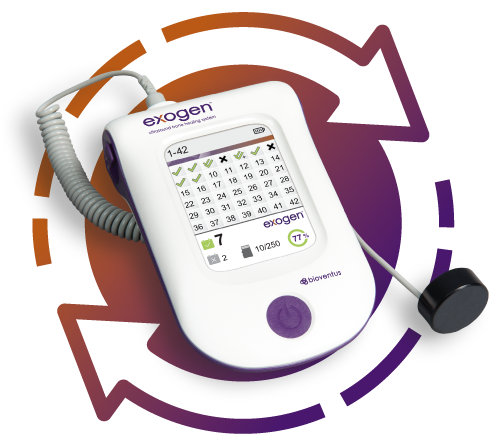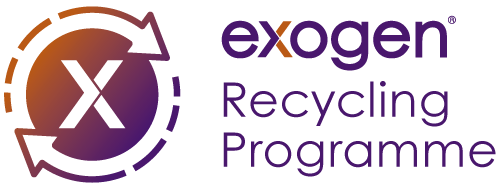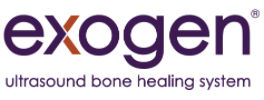Caring for Our Patients, Caring for Our Planet

The EXOGEN Recycling Programme
Used EXOGEN devices can now be collected for recycling, an important step forward in our shared commitment to environmental responsibility.
With the EXOGEN Recycling Programme, a device that reaches the end of its useful life can be processed for material recovery. The programme supports clinical needs, environmental stewardship goals, and National Health System sustainability objectives.
How can I recycle my EXOGEN device?
Note: The EXOGEN Recycling Programme is currently available in the UK (including Northern Ireland) only.
See recycling options in the Republic of Ireland here.

The EXOGEN Recycling Programme: FAQs
The EXOGEN Recycling Programme is administered through European Recycling Platform UK Ltd (ERP), which transfers the product to an Approved Authorised Treatment Facility (AATF) in Kent. The strict licensing standards for becoming an AATF help ensure that our products are recycled safely and responsibly. By keeping the programme within the UK, we also reduce transportation emissions and support local industry.
Devices are processed at the SWEEEP Kuusakoski recycling center, in Kent. SWEEEP is one of the UK’s leading dedicated waste electrical and electronic equipment (WEEE) processing facilities. They are committed to providing efficient solutions for safe, responsible recycling of waste electrical and electronic equipment.
Find more information on the recycling of WEEE devices at SWEEEP here (you will leave Bioventus’ page).
Our recycling partner, ERP will provide regular impact reports including:
- The number of units collected and from which sites
- Breakdown of weights collected
- Serial numbers of recycled devices
- Certificates of destruction
- Total material diverted from landfills
These reports are available, on request, for participating hospitals. The programme launched in 2025, and impact reports will be available beginning in 2026.
A directive for recycling waste from electronic and electrical equipment was established by the European Union to enhance the collection, treatment, and recycling of electronic and electrical equipment at the end of its lifecycle.
The WEEE Directive was created with several key objectives:
- Minimize environmental impact. E-waste poses significant threats to the environment due to the hazardous materials it contains. The WEEE Directive aims to reduce these negative impacts by promoting responsible disposal and recycling practices.
- Protect human health. Improper disposal of e-waste can lead to harmful health effects due to exposure to toxic substances. The WEEE Directive seeks to mitigate these risks by ensuring safe handling and processing of discarded equipment.
- Encourage recycling and reuse. By promoting the recycling and reuse of electrical and electronic waste, the WEEE Directive aims to conserve resources and reduce the overall volume of waste generated.
Summary of Indications for Use
EXOGEN is indicated for the non-invasive treatment of osseous defects (excluding vertebra and skull) that includes the treatment of delayed unions, nonunions,* stress fractures and joint fusion. EXOGEN is also indicated for the acceleration of fresh fracture heal time, repair following osteotomy, repair in bone transport procedures and repair in distraction osteogenesis procedures.
There are no known contraindications for the EXOGEN device. Safety and effectiveness have not been established for individuals lacking skeletal maturity, pregnant or nursing women, patients with cardiac pacemakers, on fractures due to bone cancer, or on patients with poor blood circulation or clotting problems. Some patients may be sensitive to the ultrasound gel.
Full prescribing information can be found in product labeling, at EXOGEN.com, or by calling Bioventus Customer Service.
*A nonunion is considered to be established when the fracture site shows no visibly progressive signs of healing.
